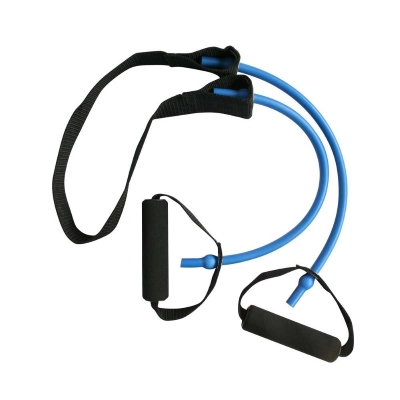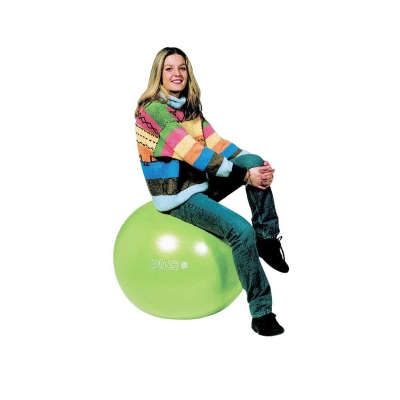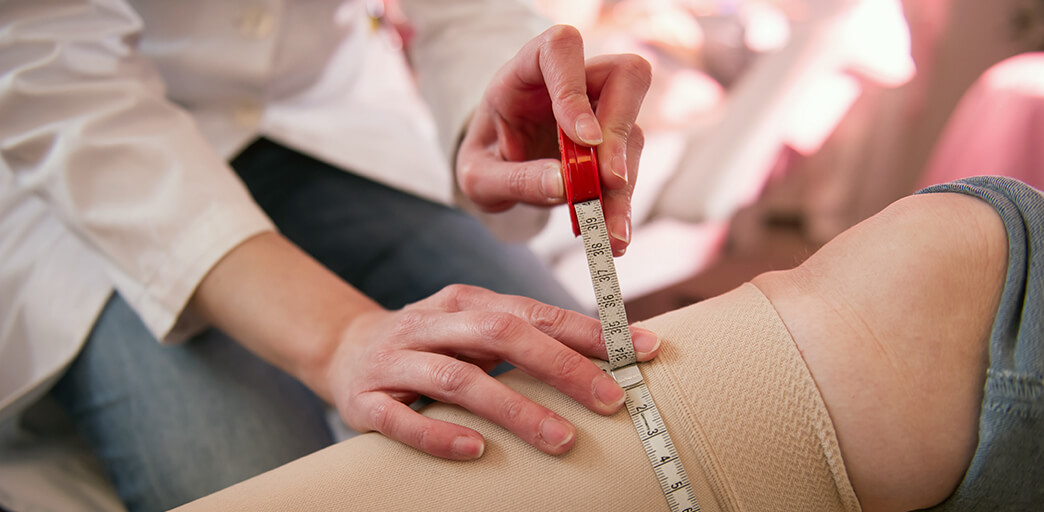
Lipedema, what to do? – Dealing with the fat distribution disorder
Lipedema is a chronic disease that many women fear. It belongs to the so-called "taboo diseases" that people do not like to talk about. In the case of lipedema, this is probably because its consequences can massively affect body aesthetics, but its cause is hardly known. Only recently has increased reporting contributed to not prematurely dismissing lipedema as obesity and to not further burden the affected women, who are often very insecure.
In this article, we will discuss the fat distribution disorder, reveal how you can recognize lipedema, and what treatment options are known. Here you can see an overview of the individual subtopics – click to jump to the desired section.
- What is lipedema?
- How do I know if I have lipedema?
- Lipedema – the three stages
- What can be done about lipedema?
- Complex Physical Decongestive Therapy (KPE)
- Liposuction – the surgery to reduce fat tissue
- Can lipedema be stopped?
- What happens if lipedema is not treated?
What is lipedema?
Lipedema – what is it? Lipedema is a chronic fat distribution disorder that affects women only. It involves weak to very pronounced accumulations of fat tissue that cannot be eliminated or trained away through sports or diet. Primarily, the buttocks and legs are affected by the fat distribution disorder, but fat accumulations can also occur on the arms. The symptoms also include the feeling of heavy legs and pain even with light pressure. Depending on the severity of the lipedema, psychological complaints accompany this disease, which can lead to impairments in body perception and significant physical limitations.
Increased awareness, information dissemination, and destigmatization of lipedema are highly desirable. According to a 2011 study (Marshall and Schwahn-Schreiber), almost ten percent of women in Germany are affected by visible manifestations of lipedema – more than three million. However, it often takes up to ten years on average before a diagnosis of lipedema is made and treatment can begin. In a quarter of known cases, it even took about 30 years for the disease to be clearly diagnosed. Additionally, statutory health insurance companies are very slow and often ineffective in supporting the available therapies, although the treatment of lipedema is indeed possible.

How do I know if I have lipedema?
In the early stages, lipedema is often not yet visible. The first symptoms include pain in the legs, which increase throughout the day. These pain symptoms occur seemingly for no reason. There is a high sensitivity to pain from touch and pressure. Many affected women describe a feeling of tension in their legs. Elevating the extremities does not bring relief.
Additionally, even in this early stage of lipedema, there are feelings of exhaustion in the legs. Standing or sitting tends to worsen these symptoms. Pain caused by lipedema can reach extreme intensity. Low air pressure and warm temperatures also exacerbate the discomfort. For example, traveling by plane would cause severe leg pain due to the changing air pressure. These pains are the first warning signal to recognize lipedema.
Another sign of lipedema is the excessive tendency to bruising on the lower extremities. Since the disease affects the capillaries of the affected tissue, these tiny vessels burst with minimal force. Thus, even relatively light impacts can result in extensive hematomas.
As the disease progresses, fat accumulations form, increasingly affecting body proportions. Depending on the distribution pattern of the lipedema, legs, buttocks, or hips appear significantly thicker than other body parts. This is particularly noticeable in previously slim women. In cases of pre-existing overweight, these fat deposits often go unnoticed initially. The fat deposits also form symmetrically on both sides of the body. This symmetry is one of the key features for recognizing lipedema.
The visible difference between lipedema and obesity – general weight gain – becomes apparent through the distribution of fat deposits on the body. Normal weight gain typically affects all body parts. While some areas (e.g., buttocks, abdomen, or hips) are more affected than others, the increasing disproportionality is very evident with lipedema. Additionally, cellulite may form, with small nodules palpable under the skin.
Hands and feet are generally not affected by pathological fat accumulations. On the arms themselves, symptoms can occur, but this does not happen with every case of lipedema. When the arms are affected by the fat distribution disorder, the fat distributes in the same symmetrical pattern as on the legs. Fat pads form that end at the ankles or wrists. In severe cases of lipedema, overhangs of fat tissue develop that hang down over the ankles like pants legs. Therefore, these are also referred to as "riding breeches" or "pump pants".
Lipedema can appear in three different fat distribution patterns:
- Thigh type: Fat deposits only occur on the hips and thighs. Colloquially, this is referred to as "riding breeches".
- Lower leg type: Lipedema extends to the lower legs, also known as "pants".
- Ankle type: The most severe form of lipedema, where collar-like fat overhangs form at the ankles, resembling "pump pants".
Lipedema tends to worsen over time. However, it can also halt its development – in some cases, excessive fat accumulation stops for currently unknown reasons. These phases can last for years until further exacerbations occur. In rare cases, the disease may remain inactive for a lifetime. When lipedema becomes active, it often occurs in bouts that bring drastic increases in fat tissue.
In the case of lipedema, neither regular exercise nor disciplined diets lead to the regression of the fat pads. This is another clear indication that a fat distribution disorder is present. However, exercise and diet can indeed help slow down and combat the fat distribution disorder.
What causes lipedema?
Although the causes are still unclear, much evidence suggests that hormonal malfunctions cause lipedema. The occurrence of the disease during pregnancy, at the end of puberty, or during menopause is an argument for this. These phases involve significant changes in hormone levels. Additionally, lipedema often occurs multiple times within a family, indicating a genetic predisposition. Unfortunately, research has not yet determined the actual causes of the pathological fat deposits.
Lipedema is unknown in children – the disease does not appear until at least the end of puberty. Men almost never develop lipedema. Only one case is known where lipedema was diagnosed in an otherwise healthy man from Taiwan. Otherwise, fat tissue disorders typical of lipedema in men occur only in connection with severe diseases that affect hormone balance (e.g., as a result of liver cirrhosis).
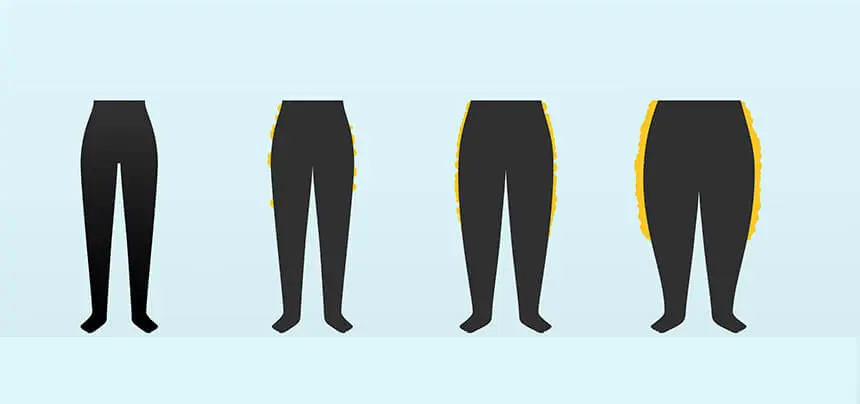
Lipedema – the three stages
- Lipedema Stage 1: In the early stage of lipedema, the shape of "riding breeches" begins to emerge. The skin is still smooth but shows clear signs of cellulite when pinched. The deeper skin tissue – the subcutaneous tissue – feels thicker and softer than usual. In some cases, small hard nodules can already be felt under the skin.
- Lipedema Stage 2: Fat deposits in the tissue have progressed to the point where a clear riding breeches shape has formed. Especially in women with a slim upper body, the discrepancy with the mass of the lower body is now very noticeable. The skin surface is also now marked by dimples and larger nodules. This is now referred to not as orange peel skin but as "mattress skin". Lipedema is now clearly recognizable as such.
- Lipedema Stage 3: In the third stage, subcutaneous tissue begins to harden. On the inner thighs and around the knees, so-called "flaps" – pronounced fat folds – form. The leg shape now corresponds to the "pump pants" shape, with fat collars hanging down over the ankles. The deforming fat deposits cause skin areas to rub against each other, leading to painful chafing wounds. Here, inflammation can also occur, which can develop into serious secondary diseases such as shingles. The change in body proportions also forces the legs into an X-position, increasing the load on the joints. In this phase, a lymphatic edema may also develop.
The transition between the stages of lipedema is gradual. Individual symptoms can also occur in other stages. Above all, pain sensitivity varies from patient to patient.
Lipedema in conjunction with lymphedema
Lymphedema resembles lipedema because it causes similar symptoms. However, it is disorders in the drainage of lymphatic fluid that cause an accumulation of fluid – not fat. The resulting swellings also affect the backs of the hands and feet, but usually only occur on one side of the body. Lymphedema is also painless.
However, severe lipedema can promote the development of lymphedema. The fat deposits then restrict the lymphatic flow, causing additional lymph to accumulate in the tissue. The combined occurrence of symptoms is called lipo-lymphedema.
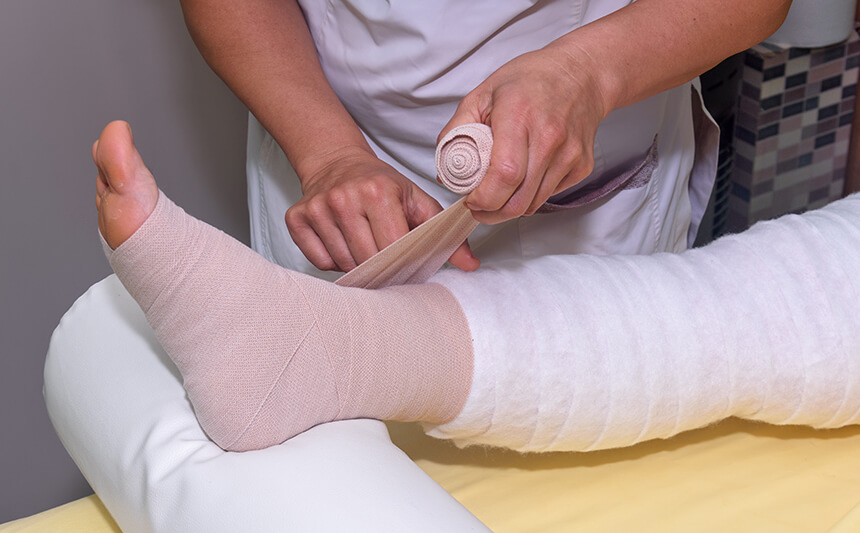
What helps against lipedema?
Although lipedema is currently considered incurable, there is a ray of hope for affected women: the disease can be treated. The first hurdle is timely diagnosis – too often an emerging lipedema is treated as obesity. However, the success prospects of most countermeasures are best in the early phase. The treatment of the fat distribution disorder aims to counteract symptoms such as pain and the increase in fat deposits. It also aims to prevent secondary diseases such as skin inflammation or the development of lymphedema.
Warning: Do not use laxatives or diuretic pills. These remedies are not suitable for treating lipedema – they can even worsen the situation. The loss of water can increase the relative protein concentration in the fat tissue. When the effect of the pills wears off, the tissue attracts even more water, causing the fat deposits to grow further.
Complex Physical Decongestive Therapy (KPE)
The Complex Physical Decongestive Therapy (KPE) was originally developed to treat chronic lymphedema. The procedure has now been adapted to treat lipedema as well. KPE is divided into two phases, with an initial decongestion phase followed by a maintenance phase to stabilize the achieved successes. Below we introduce the measures that are part of a KPE.
Manual Lymph Drainage (MLD)
Manual lymph drainage (MLD) is a special type of massage. MLD is performed very gently, with minimal pressure, and is intended to support the lymphatic vessels in transporting fluid and proteins. The massage is generally performed from the head end towards the edema.
With pure lipedema, lymphatic fluid usually flows sufficiently on its own – manual lymph drainage is mainly used here for its pain-reducing effect. The pressure pain of lipedema can be alleviated with MLD. This makes it easier for affected women to wear compression stockings or compression bandages.
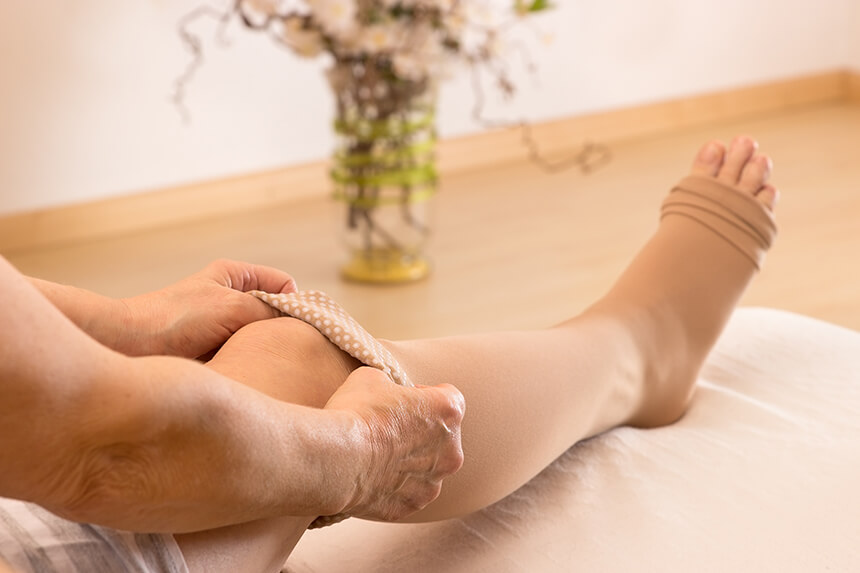
Compression Therapy & Compression Stockings
Compression therapy is a crucial factor in the treatment of lipedema and lipo-lymphedema. In the early phase of lipedema, consistent use of compression therapy can drastically slow down or even halt the progression of the disease. It is crucial for success that the patient wears her compression stockings all day long from morning to evening.
The compression effect consists of improved microcirculation of blood into the deeper layers of the skin. The skin tissue is compressed by the compression stocking, causing capillaries and cells to move closer together. Shorter paths for blood flow lead to better cell supply and facilitate the removal of waste products. At the same time, less fluid can seep into the tissue. If lipedema also occurs on the arms, corresponding long compression gloves can be worn there as well.
Which compression stockings should be worn for lipedema should be clarified medically, as there are different types. Simple support stockings are unsuitable as they only provide light support for the veins. In the case of lipedema, medical compression stockings are recommended, which are divided into four classes. Stockings of class I exert the least pressure on the tissue, while those of class IV exert the most pressure.
A compression bandage is usually only used for lipo-lymphedema. It helps to drain edema fluid and is only used as long as the edema can be reduced. From this point on, compression stockings are used again for treating lipedema.
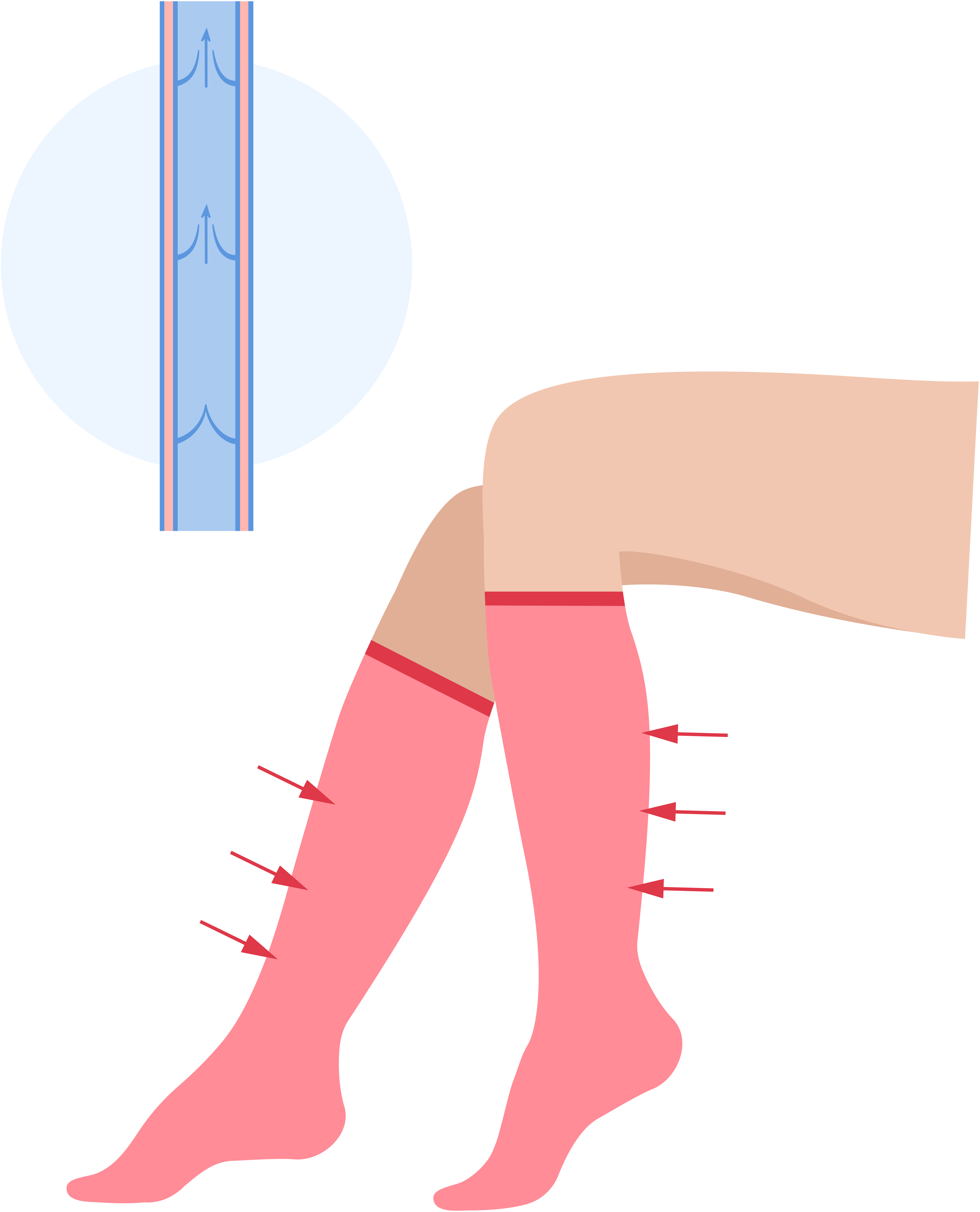
Dynamic Compression Therapy
This relatively new procedure is an alternative to manual lymph drainage. With dynamic compression therapy, jacket or trouser cuffs are worn that have numerous air chambers, which can be sequentially inflated from the feet or wrists upwards. Regular deflation and reinflation create a massage effect similar to MLD.
A major advantage of this method is that it can be used in self-treatment. Users can sometimes completely forego MLD and achieve pain relief and counteract fluid retention with a home device.
Healthy Diet and Exercise with Lipedema
Unfortunately, it is not possible to cure lipedema with a diet. However, a healthy diet and physical activity can counteract the formation of new fat deposits. Since lipedema patients often also struggle with "normal" overweight, a healthy lifestyle alongside the medical treatment of the fat distribution disorder is generally advisable. Especially in the early phase of lipedema, the further development of the disease can be significantly slowed down.
What kind of sports are possible with lipedema?
Light endurance sports and strength exercises are suitable for burning calories and building active muscle mass, which promotes a higher basal metabolic rate. Even daily brisk walks can be a start to doing something against the fat distribution disorder. Compression stockings should be worn during sports.
Pader top/vit® Swinging Dumbbell

Pader top/vit® Swinging Dumbbell with counterweight, white 2.5kg
Swimming and water aerobics are highly recommended, as water is an excellent medium for natural compression therapy. Exercise in the water is gentle on the joints because the buoyancy supports body weight. Since the water pressure is highest at the feet and decreases towards the water surface, aqua-gymnastics or -aerobics can effectively support venous blood flow and the drainage of edema.
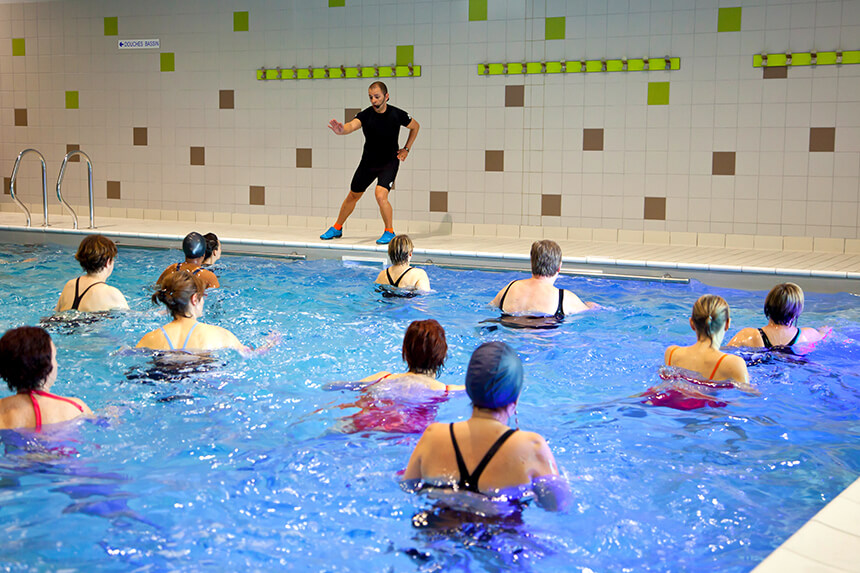
Which exercises you can do depends, for example, on your age, current condition, and the stage of your lipedema. Discuss your training options with your doctor or therapist. Physical activity will mainly help you avoid additional weight gain and stop the progression of lipedema. The fat deposits of lipedema themselves remain unaffected. The psychological effect of physical activity should also not be underestimated. Increasing physical performance, building muscle, and sticking to a training plan give a sense of achievement – of making progress.
What is the healthiest diet with lipedema?
The healthiest diet with lipedema is chosen to provide the body with all essential nutrients while controlling calorie intake and avoiding unhealthy substances. It is crucial that you find a dietary regimen that you can maintain for a lifetime. Diets do not help against lipedema and eventually come to an end. We recommend consulting with nutrition experts to find a balanced diet that takes your individual situation into account.
Lipedema, what to do? Here are some general tips for a balanced diet with lipedema:
- Use healthy fats found in various nuts or seeds. Avoid margarine or butter as much as possible.
- Eat a low-salt diet. Salt binds water in the body – excess salt is excreted with urine, which can lead to fluid deficiency.
- It is generally important to drink enough. An adult should usually consume at least two liters of water a day. Avoid sugary drinks and alcohol with lipedema.
- Eat little meat and cheese – you do not have to completely abstain but should prefer lean and low-calorie varieties.
- Vegetables are among the best things you can consume. Most vegetables contain so few calories that you can fill up on them several times a day. Their fiber promotes digestion, and blood sugar levels remain stable.
- Fruit is also healthy but can raise blood sugar levels. Enjoy it in moderation. Avoid sweets, white bread, and other foods that quickly spike blood sugar levels.

Liposuction – the surgery to reduce fat tissue
Liposuction is not a conventional fat suction but a special procedure for targeted suction of pathological fat deposits of lipedema. During liposuction, the suction cannula is guided exclusively parallel to the lymphatic pathways to avoid injury. The operation requires precise knowledge of the course of the lymphatic vessels and should only be performed by appropriately trained doctors.
Liposuction can greatly improve the situation of affected women. If successful, the surgery can:
- remove retained fluid and reduce pressure pain or even lead to painlessness
- ensure that MLD is needed less frequently or not at all, and in some cases even make compression stockings unnecessary
- normalize the proportions of the affected body parts and thus give the patient increased self-confidence
- reduce or eliminate existing fat folds and deep wrinkles, where sore spots can develop
- eliminate fat deposits on the inner thighs, preventing them from rubbing together while walking, avoiding skin irritation, and normalizing gait
- reduce the tendency to bruises and hematomas
- prevent the development of a lipo-lymphedema
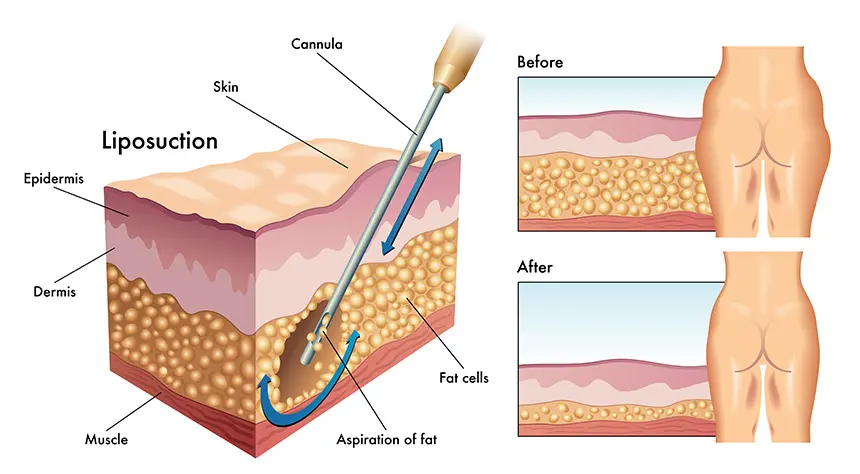
Liposuction is not a cure-all for lipedema. It can greatly alleviate the symptoms, sometimes even stop them – but it cannot cure lipedema. However, the patient's quality of life should improve significantly. As with many chronic diseases, the psychological component is also not to be underestimated with lipedema. Especially patients with previously severe symptoms report a greatly increased sense of well-being after liposuction – the change is most noticeable in the late stage of lipedema.
The most effective liposuction is when it is performed in the first or early second stage of lipedema. To maintain the success of the surgery permanently, the patient must bring lifelong discipline. A healthy diet and physical activity are essential. In many cases, wearing compression stockings against lipedema must also be maintained. But besides the proportional improvements, the reduction of pain sensitivity can especially increase the quality of life.
Keep in mind that this is a surgery that should be preceded by a thorough medical examination. It must be weighed from patient to patient whether the procedure makes sense or if there are contraindications. It is best to get several medical opinions before deciding on liposuction.
When is liposuction not advisable?
Some patients approach liposuction with very high expectations. It is important to note that it is difficult to predict how successful the procedure will ultimately be. The surgery can alleviate but not stop lipedema. Besides psychological considerations, especially health reasons that speak against liposuction should be weighed:
- Is the patient able to withstand the surgery, which may require local anesthesia or (rarely) general anesthesia?
- Are there allergies to the anesthetics used?
- Are there diseases or damages to the heart, liver, kidneys, or lungs?
- Does the patient tend to have cramps or thrombosis?
- Are blood-thinning medications being taken?
- Is there a generalized inflammation of the fat tissue? (Panniculitis)
- Is the patient pregnant?
Some contraindications necessitate a special method of liposuction. For example, if the patient has very slack skin or very high body weight up to generalized obesity, a water-jet-assisted liposuction (WAL) under general anesthesia may be necessary.
Psychotherapy – accepting the disease
The consequences of lipedema, from pain to the loss of the perceived aesthetic body shape, also significantly affect the psyche. Affected women often suffer from a negative self-image up to depression. These are often accompanied by eating disorders, which in turn worsen the disease.
It can therefore be very useful to support the treatment of lipedema with accompanying psychotherapy. Accepting the disease and learning to lead a fulfilling life despite it is an important goal.
Can lipedema be stopped?
Lipedema itself is not curable according to current medical knowledge, as the causes of the disease are not clarified. Although lipedema itself cannot be stopped, with the right treatment and lifestyle, the symptoms can be slowed down and in some cases even halted. The earlier the fat distribution disorder is detected and treated, the better the chances of success.
What happens if lipedema is not treated?
If lipedema is not treated, there is a high probability that it will get worse with further bouts. The more pronounced the symptoms, the more difficult they may be to treat. If fat deposits in the third stage of lipedema reach a critical point, the affected skin, joints, and, of course, the psyche will increasingly suffer. The development of secondary diseases such as lipo-lymphedema becomes more likely.
If the fat distribution disorder is treated correctly, a condition can be achieved where the effects of lipedema remain under control. Discipline and various lifestyle changes may be required for this, but the effort is certainly worth it.
Lipedema, what to do? Conclusion:
Lipedema is a chronic disease that can cause great physical and emotional suffering. However, affected women are no longer helplessly facing it, as lipedema can be treated in various ways. Early detection of the disease is crucial, as it is often dismissed as overweight. If you believe you are suffering from early-stage lipedema, see a doctor who takes your concerns seriously.
The destigmatization of the chronic fat distribution disorder is progressing and is increasingly bringing patients out of isolation. In addition to new treatment methods, there have also been advancements in fashion – the unavoidable compression stockings are now available in fashionable designs, enabling a stylish and confident appearance.
We wish all lipedema patients the best possible treatment success and a confident approach to their disease!


